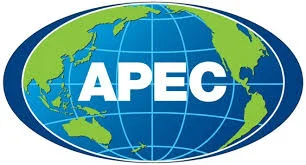APEC SME Business Forum, Shenzhen 2018
Andrew Robb AO, Chairman, The Robb Group
This is a very appropriate time and place to discuss the need for a free and open world trade environment.
Timely because it coincides with the 40 year anniversary of China opening its trade and investment doors to the world; and the appropriate place to have such a discussion because Shenzhen’s special economic zone, now one of the most economically dynamic cities in the world, marks the starting point where China’s economic liberalisation began.
Shenzhen has become a remarkable symbol to the world of the economic power unleashed by an open, market-based approach in running an economy.
The progressive adoption of this approach across China has seen unprecedented growth in prosperity, with the removal of 500 million people from poverty and the modernisation of so much of China in the space of 40 years.
This Shenzhen symbol, powered by the innovation and energy of millions of small and medium businesses, has not been lost on other developing countries around the globe, and especially across Asia, where we are witnessing trade and investment doors opening as never before.
The developing world is recognising that focusing on your country’s strengths by removing highly distorting trade protections which add huge costs and make your businesses uncompetitive, can quickly unlock entrepreneurship, encourage and enable risk taking and innovation, result in the creation of many new jobs and see more and more investment.
This is the story of Shenzhen; the evidence is there for all to see.
While the developing world in Eastern Europe, Africa, South America and Asia is progressively opening their trade and investment doors, and seeing strong economic growth and improved living standards as a consequence, key parts of the developed world are turning inward and adopting defensive and protectionist policies, relying on artificial and debt driven stimulus.
This knee-jerk response is not a sustainable answer to the energy, innovation and competitiveness that is emerging from the greater freedoms being applied in many countries in the developing world.
Much of this energy and innovation comes from empowering small and medium sized businesses in each country.
As the developed world comes to recognise and accept the inevitable and substantial competitive forces coming from the developing world in the decades ahead, the tens of millions of small and medium businesses who will drive much of the growth must be resolute in demanding continued opening up of their economies, if the huge potential of the developing world is to be realised.
Attempts by parts of the developed world to contain this growth in the developing world by protectionist measures is best countered by further trade and investment liberalisation. Don’t fall for the trap of also turning inward and closing the trade and investment doors.
It is never easy but in these uncertain times stay true to the path of opportunity for all and enjoy the prosperity that will come with further opening our doors to the chill winds of competition.
Let me finish with one example close to home, namely, the free trade agreement struck between China and Australia which came into effect on 1 January 2015.
This high-quality agreement has already resulted in dramatic increases in clean, green and healthy food exports from Australia, as well as much greater opportunities for services into China – personal financial services, healthcare services, skills training, wellness/beauty services, food safety, travel, theatre, tackling air, water and soil pollution, and much more.
From 1 January 2019 all tariffs in Australia facing imports from China will be set at zero, and 98 percent of imports from Australia into China will face zero tariffs.
And we are seeing much of the subsequent strong growth in trade in goods, and services, stemming from this 21st century free trade agreement, is being taken up by small and medium sized enterprises, where innovation is key to success.
Further trade agreements, and the current advanced negotiation of RCEP (the Regional Cooperation Economic Partnership) involving all ASEAN countries, India, China, Japan, South Korea, New Zealand and Australia must be accelerated and completed to maintain the momentum.
I congratulate the conference organizers for shining a further bright light on the crucial role of small and medium enterprises to the delivery of strong growth through energy and innovation.
